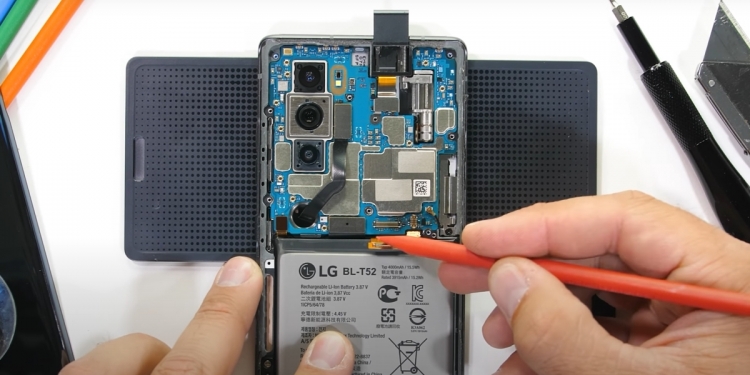The LG Wing is definitely, definitely the most unique phone that we’ve seen in 2020. In an age when phones are becoming almost depressingly generic—bar the recent proliferation of foldable smartphones—LG has gone in a totally different direction with the Wing. As per its name, it sports a rotating dual-display system, with the top display rotating out into a T-shaped configuration.
So, how does it even work? Thanks to JerryRigEverything, we now have have an idea. Have a look:
When the phone is in its T-shaped configuration, the bottom display is used to display app UI controls, with the top screen displaying video or other content. In the video, you can see that LG has gotten this unique form-factor to work by cutting a hole through the PCB and the main frame of the phone.
Meanwhile, the hinge mechanism (or is it a swivel mechanism?) is made up of two plates that are held together by springs. LG says that they’ve tested the opening motion of the Wing 200 times, which means that you’ll be able to open the phone 100 times per day, for five and a half years.
A hydraulic damper helps in this regard. Usually seen on trucks and off roading vehicles, this is “the smallest hydraulic damper I’ve ever seen”, according to the YouTuber. This should help to cushion the impact when you swivel the phone open—or closed.
Of course, the LG Wing doesn’t have any sort of water resistance. This makes a lot of sense, given the complexity of the device and moving parts, although there is a coating on the internals of the device that might help a little. Regardless, if you’re planning on getting one, keep it away from moisture as much as you can.
It’s obvious that LG has put a lot of effort into the Wing, and the device in itself looks a lot more like a prototype than an actual commercially-available smartphone. So, what do you think? Does the LG Wing look durable enough—on the inside—for the investment? Let us know in the comments section below.
[ VIA ]








